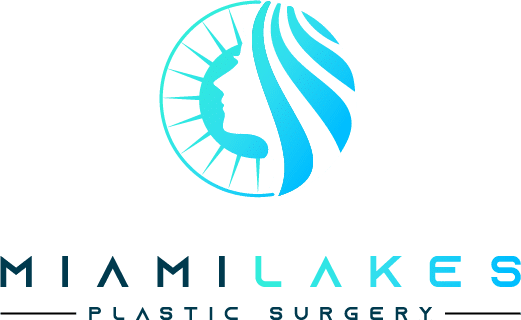Lipolift Breast Reduction
- Updated on: January 25, 2024
Embrace a new, confident you with Lipolift Breast Reduction in Miami. Our skilled team provides personalized care, utilizing advanced liposuction techniques to achieve your desired shape and size. Experience a transformation with improved proportions and relief from discomfort. Begin your journey towards renewed self-confidence today.
Book A Free Consultation
Lipolift Breast Reduction Before and After Gallery
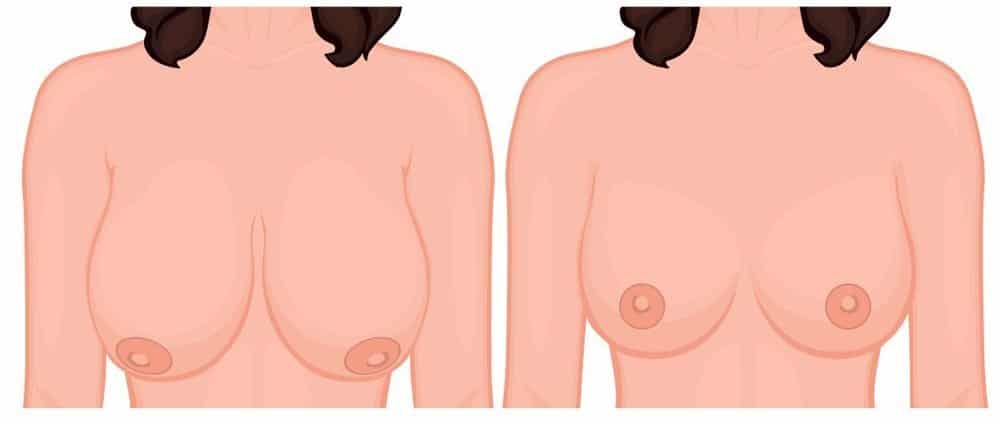
What Is a Lipolift Breast Reduction?
A Lipolift Breast Reduction is a specialized surgical procedure designed to reduce the size of the breasts and reshape them for a more proportionate and aesthetically pleasing appearance. The procedure involves removing excess breast tissue and fat through liposuction, lifting the breasts to a higher position, and reshaping them to create a more youthful and natural contour. It offers patients the opportunity to achieve a more balanced and harmonious body silhouette while improving their overall quality of life. Consulting with a qualified plastic surgeon is essential to determine if Lipolift Breast Reduction is the right procedure for your specific needs and goals
The Causes of Lipolift Breast Reduction
Lipolift Breast Reduction is a surgical procedure that addresses the size and shape of the breasts, providing patients with a more proportionate and comfortable outcome. Several factors contribute to the need for this procedure, ranging from physical discomfort to aesthetic concerns. In this article, we will explore the common causes that lead individuals to seek Lipolift Breast Reduction.
- Disproportionate Breast Size: One of the primary reasons for considering Lipolift Breast Reduction is having breasts that are disproportionately large in relation to the individual’s body frame.
- Post-Pregnancy Changes: Pregnancy and breastfeeding can bring about significant changes in the size and shape of the breasts. Some women may experience an increase in breast size that persists even after the completion of breastfeeding.
- Age-Related Changes: As individuals age, the breasts may undergo natural changes that result in sagging and loss of volume. Factors such as gravity, hormonal fluctuations, and the gradual loss of skin elasticity contribute to these changes.
- Psychological and Emotional Impact: Large breasts can have a significant psychological and emotional impact on individuals. Some may experience lowered self-esteem, body image dissatisfaction, and feelings of self-consciousness or embarrassment.
- Personal Choice: While physical discomfort and aesthetic concerns are common reasons for seeking Lipolift Breast Reduction, personal choice also plays a significant role. Some individuals simply desire smaller, more proportionate breasts to align with their personal preferences and goals.
In conclusion, Lipolift Breast Reduction is sought after for a variety of reasons, including disproportionate breast size, post-pregnancy changes, age-related changes, psychological and emotional impact, and personal choice.

The Procedure of Lipolift Breast Reduction
After the Lipolift Breast Reduction procedure, the surgeon will carefully close the incisions with sutures and apply dressings or surgical tape. You will be provided with post-operative care instructions and prescribed medications. Follow the surgeon’s recommendations for a smooth recovery and optimal results.
To support the healing process and optimize your results, you will receive detailed post-operative care instructions from your surgeon. These instructions may include:
-
Wound Care: You will be provided with specific guidelines on how to clean and care for the incision sites. This may involve keeping the area clean, changing dressings as directed, and avoiding activities that may disrupt the healing process.
-
Medications: Your surgeon may prescribe pain medications or antibiotics to manage discomfort and prevent infection. It is essential to take these medications as directed and notify your surgeon of any adverse reactions or concerns.
-
Follow-up Appointments: Your surgeon will schedule follow-up appointments to monitor your healing progress. During these visits, they will remove any drains if used, assess your incisions, and address any questions or concerns you may have.
-
Recovery Timeline: Your surgeon will provide an estimated timeline for your recovery, including when you can resume regular activities, exercise, and return to work. It is crucial to follow these guidelines to ensure a smooth recovery and minimize complications.
Remember to communicate openly with your surgeon throughout the recovery process. They are there to support you and address any concerns you may have. By following their instructions and attending your follow-up appointments, you can help ensure optimal healing and achieve the best possible outcomes from your Lipolift Breast Reduction procedure.

How Much Does a lipolift breast reduction Cost?
The cost of Lipolift Breast Reduction may range from $5,000 to $10,000 or more and can vary depending on factors such as location and individual circumstances. During a consultation, the surgeon will assess your individual case, discuss your goals and expectations, and provide you with a personalized cost breakdown based on your unique needs. It’s important to schedule a consultation with a qualified plastic surgeon for an accurate and personalized cost assessment based on your specific needs and goals.
Is Lipolift Breast Reduction Covered by Insurance?
The coverage of Lipolift Breast Reduction by insurance varies depending on factors such as the insurance provider, policy, and medical necessity. In general, if the procedure is deemed medically necessary due to physical symptoms and functional limitations caused by large breasts, there is a possibility of insurance coverage.
Additionally, consulting with a qualified plastic surgeon who has experience working with insurance companies can provide further guidance and assistance in navigating the insurance process. It is important to contact your insurance provider and consult with a qualified plastic surgeon to understand the specifics of your policy and requirements for coverage.
APPLY FOR FINANCING
Preparing for Lipolift Breast Reduction: A Successful Procedure
Preparing for Lipolift Breast Reduction is an essential step towards ensuring a successful procedure and optimal results. In this guide, we will outline key aspects to consider and steps to take in preparation for your Lipolift Breast Reduction journey.
-
Consultation with a Qualified Plastic Surgeon: Schedule a consultation to discuss your goals, evaluate breast anatomy, and understand the procedure.
-
Medical Evaluation and Pre-Procedure Instructions: Undergo a comprehensive medical evaluation and follow pre-procedure instructions provided by the surgeon.
-
Lifestyle Adjustments: Make necessary adjustments such as maintaining a balanced diet, staying hydrated, and quitting smoking.
-
Arranging Support and Recovery: Arrange for a support person, plan transportation, and create a comfortable recovery space.
-
Mental and Emotional Preparation: Prepare yourself mentally, seek support, and discuss concerns with the surgeon.
By following these preparation steps, you can ensure a smoother Lipolift Breast Reduction experience and increase the likelihood of achieving your desired outcomes. Remember to communicate openly with your surgeon, ask any questions you may have, and adhere to their guidance throughout the process.
Recovery after Lipolift Breast Reduction: What to Expect
The recovery period after Lipolift Breast Reduction is an essential phase that allows your body to heal and adjust to the changes made during the procedure. Understanding the recovery process and following post-operative instructions will contribute to a smooth and successful outcome. Here is an overview of what to expect during the recovery period:
-
Immediate Post-Operative Care: After the surgery, you will be monitored closely in a recovery area until you are stable. Pain medication and dressings will be provided to manage discomfort and protect the incision sites.
-
Wound Healing and Dressing Changes: During the initial days following the procedure, it is important to keep the incision sites clean and dry. Your surgeon will provide specific instructions on how to care for the incisions and when to change dressings.
-
Swelling and Bruising: Swelling and bruising are common after Lipolift Breast Reduction and may take several weeks to subside. To minimize swelling, you may be advised to wear compression garments as recommended by your surgeon.
-
Physical Activity and Rest: It is crucial to get plenty of rest during the initial stages of recovery. While light activities and gentle movements are encouraged to promote circulation, strenuous exercises and heavy lifting should be avoided for a few weeks to allow proper healing.
-
Follow-Up Appointments: Your surgeon will schedule follow-up appointments to monitor your progress and remove any stitches or drains if necessary. These appointments are important to ensure that you are healing well and to address any concerns you may have.
-
Scar Management: Over time, the incision scars will fade. Your surgeon may recommend scar management techniques such as silicone gel or sheets to help minimize their appearance. It is important to protect the incisions from direct sunlight during the healing process.
-
Final Results: It may take several months for the final results of your Lipolift Breast Reduction to become apparent. As swelling subsides and the breast tissue settles, you will notice improvements in breast size and shape.
During the recovery period, it is important to closely follow your surgeon’s instructions, attend follow-up appointments, and communicate any concerns or unusual symptoms. Every individual’s recovery process is unique, so it is crucial to be patient and allow your body the time it needs to heal properly.
Tips for Recovery
Here are some tips to support a smoother recovery after Lipolift Breast Reduction:
-
Follow Post-Operative Instructions: Carefully adhere to the post-operative instructions provided by your surgeon. This includes medication schedules, wound care, and activity restrictions.
-
Manage Discomfort: Take prescribed pain medications as directed to manage any discomfort or pain during the recovery period. Avoid taking over-the-counter medications without consulting your surgeon.
-
Wear Compression Garments: Follow your surgeon’s recommendation on wearing compression garments. These garments help reduce swelling, provide support, and promote proper healing.
-
Take Rest and Limit Physical Activities: Allow your body to rest and heal by avoiding strenuous activities, heavy lifting, and intense exercises for the specified period advised by your surgeon. Gradually increase your activity levels as recommended.
-
Maintain a Healthy Diet: Eat a nutritious diet to support your body’s healing process. Include plenty of fruits, vegetables, lean proteins, and whole grains. Stay well-hydrated by drinking an adequate amount of water.
-
Avoid Smoking and Alcohol: Smoking can delay the healing process and increase the risk of complications. It is advisable to quit smoking before and during the recovery period. Additionally, limit alcohol consumption as it can interfere with the healing process and medication effectiveness.
-
Attend Follow-Up Appointments: Regularly attend follow-up appointments with your surgeon to monitor your progress, address any concerns, and remove stitches or drains if necessary.
-
Take Care of Incision Sites: Keep the incision sites clean and dry as per your surgeon’s instructions. Avoid submerging in pools, hot tubs, or baths until advised by your surgeon.
-
Be Patient: Remember that the recovery process takes time. It is normal to experience temporary swelling, bruising, and discomfort. Allow your body to heal naturally and avoid comparing your progress with others.
-
Seek Emotional Support: Reach out to friends, family, or support groups to discuss your feelings, concerns, and experiences during the recovery period. Emotional support can be beneficial throughout the healing journey.
By following these recovery tips and maintaining open communication with your surgeon, you can facilitate a smoother and more successful recovery after Lipolift Breast Reduction. Remember to be patient, take care of yourself, and allow your body the time it needs to heal properly.
Risks of Lipolift Breast Reduction: Potential Complications
Lipolift Breast Reduction is generally a safe procedure; however, it is important to be aware of potential risks and complications. While the majority of patients experience successful outcomes, it is essential to understand and discuss these risks with your surgeon. Here are some potential risks associated with Lipolift Breast Reduction:
-
Bleeding: Excessive bleeding during or after the surgery is a possible risk. Your surgeon will take steps to minimize bleeding during the procedure and monitor you closely during the recovery period.
-
Infection: Although rare, there is a risk of infection at the incision sites. Your surgeon will provide you with guidelines on wound care and prescribe antibiotics if necessary to reduce this risk.
-
Scarring: Lipolift Breast Reduction involves incisions, which will result in scars. While efforts are made to minimize scarring and place incisions strategically, individual healing and scar formation can vary.
-
Changes in Sensation: Temporary or permanent changes in nipple or breast sensation can occur after the procedure. This can include decreased or increased sensation, or numbness in the breast area.
-
Asymmetry: While efforts are made to achieve symmetry, there is a risk of uneven or asymmetrical results. In some cases, additional procedures may be necessary to improve symmetry.
-
Delayed Healing: Some individuals may experience delayed wound healing or wound separation. This can prolong the recovery period and may require additional treatments.
-
Seroma: Fluid accumulation, known as a seroma, can occur after the surgery. Your surgeon may use drains to prevent this, but in some cases, seroma formation may still occur and require drainage.
-
Poor Cosmetic Outcome: In rare cases, dissatisfaction with the cosmetic outcome may occur. It is important to have realistic expectations and communicate your goals with your surgeon during the consultation.
-
Anesthesia Risks: General anesthesia or sedation carries its own risks, including reactions to medications, breathing difficulties, or adverse effects on the cardiovascular system. Your anesthesiologist will assess your health and take necessary precautions to minimize these risks.
-
Blood Clot Formation: There is a slight risk of developing blood clots in the legs (deep vein thrombosis) or lungs (pulmonary embolism) after any surgical procedure. Your surgeon will take preventive measures, such as early ambulation and compression stockings, to minimize this risk.
It is important to have a thorough discussion with your surgeon about these potential risks and complications before proceeding with Lipolift Breast Reduction.
Consult With Your Miami Surgeon Before the Procedure
If you have any additional inquiries or concerns about Lipolift Breast Reduction, your specific condition, or potential risks, we encourage you to reach out to us and schedule a consultation at Miami Lakes Cosmetics. Our experienced doctors specializing in Lipolift Breast Reduction are dedicated to providing you with the utmost guidance, offering the best possible advice throughout the entirety of your surgical journey and recovery process. Rest assured, they will also provide detailed information on the potential cost of the Lipolift Breast Reduction procedure, ensuring transparency and eliminating any unexpected surprises.
BE INSPIRED !
62K Followers
Frequently asked questions
Ideal candidates for Lipolift Breast Reduction are individuals with disproportionately large breasts causing physical discomfort, pain, posture issues, difficulty finding well-fitting clothing, or emotional distress. It is important to have realistic expectations and be in good overall health.
The Lipolift Breast Reduction procedure involves making small incisions strategically placed around the breast area. Through these incisions, excess breast tissue, fat, and skin are removed, and the remaining tissues are reshaped and lifted to create a more proportional and aesthetically pleasing breast appearance.
As with any surgical procedure, Lipolift Breast Reduction carries potential risks and complications, including bleeding, infection, scarring, changes in nipple sensation, asymmetry, delayed wound healing, seroma (fluid accumulation), hematoma, unfavorable scarring, and the need for revision surgery. Your surgeon will discuss these risks with you in detail and take necessary precautions to minimize them.
The recovery period varies for each individual, but most patients can expect to resume normal activities within a few weeks. Initial discomfort, swelling, and bruising are common but will gradually subside. Full recovery and final results may take several months.
Lipolift Breast Reduction involves incisions, resulting in scars. However, skilled surgeons employ techniques to minimize visible scarring and place incisions strategically in inconspicuous areas, such as around the areola or in the breast crease. Over time, scars typically fade and become less noticeable.
The final results of Lipolift Breast Reduction become more apparent as swelling subsides and the breasts settle into their new shape. It may take several months for the swelling to fully resolve and for the breasts to achieve their desired appearance.
The results of Lipolift Breast Reduction are long-lasting. However, factors such as aging, gravity, weight fluctuations, and pregnancy can affect breast shape and size over time. Maintaining a stable weight and a healthy lifestyle can help prolong the results.
Non-surgical alternatives may include weight loss, physical therapy, and medication management for underlying conditions. However, these alternatives may not provide the same results as surgical removal, especially for larger humps.
Lipolift Breast Reduction can potentially affect breastfeeding ability, as some glandular tissue may be removed during the procedure. However, it depends on the extent of tissue removal and individual variations. If you plan to have children in the future, it is important to discuss your intentions with your surgeon.
The cost of Lipolift Breast Reduction varies depending on several factors, including the surgeon’s expertise, geographical location, facility fees, anesthesia fees, and pre- and post-operative care. It is best to consult with your surgeon and discuss the specific details of the procedure and associated costs. In terms of insurance coverage, it depends on the insurance provider and the policy terms. Lipolift Breast Reduction may be covered if it is deemed medically necessary and meets specific criteria set by the insurance company.
Some discomfort, swelling, and tenderness are common during the initial stages of recovery after Lipolift Breast Reduction. Your surgeon will prescribe appropriate pain medications to manage any discomfort and provide recommendations for pain management during the recovery period.
Centre for Surgery. (n.d.). What is Buffalo Hump Removal? Retrieved from https://centreforsurgery.com/what-is-buffalo-hump-removal/
Shape Clinic. (n.d.). Buffalo Hump Treatment in Sydney. Retrieved from https://www.shapeclinic.com.au/treatment/buffalo-hump-sydney/
Reflections Center. (n.d.). Buffalo Hump Lipo. Retrieved from https://www.reflectionscenter.com/gallery/buffalo-hump-lipo/

Victoria Secret Bras For Breast Augmentation
Post-Surgery Comfort and Confidence Victoria Secret bras are an iconic symbol of both comfort and allure. Known for their exceptional quality, elegant designs, and a

Vanity Fair Bras For Breast Augmentation
What are Vanity Fair Bras? Vanity Fair is a well-known brand that makes a variety of lingerie, and their bras are one of their main

Cacique Bras For Breast Augmentation
What are Cacique Bras? Cacique Bras is a brand that focuses on creating lingerie and intimate apparel with a primary emphasis on catering to plus-size

What To Wear After a Breast Reduction
Introduction To What To Wear After a Breast Reduction A breast reduction isn’t just about changing your appearance; it’s about reclaiming comfort, confidence, and a

What To Wear After a Breast Lift
Introduction To What To Wear After a Breast Lift A breast lift, or mastopexy, isn’t just a surgical procedure; it’s a journey towards self-renewal and
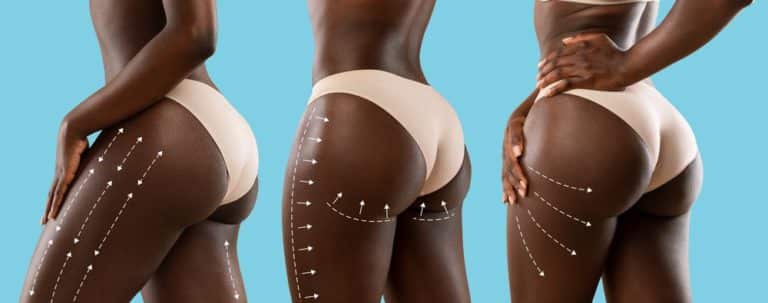
BBL and Breast Augmentation Cost Miami
Miami is a renowned destination for individuals seeking to enhance their curves and achieve their dream body through transformative surgeries like Brazilian Butt Lift (BBL)

Cup Breast Reduction Size Chart
Cosmetic surgeries, such as liposuction, tummy tuck, breast reduction, breast augmentation, BBL, etc., have become more prevalent in recent years. Breast reduction is a sophisticated
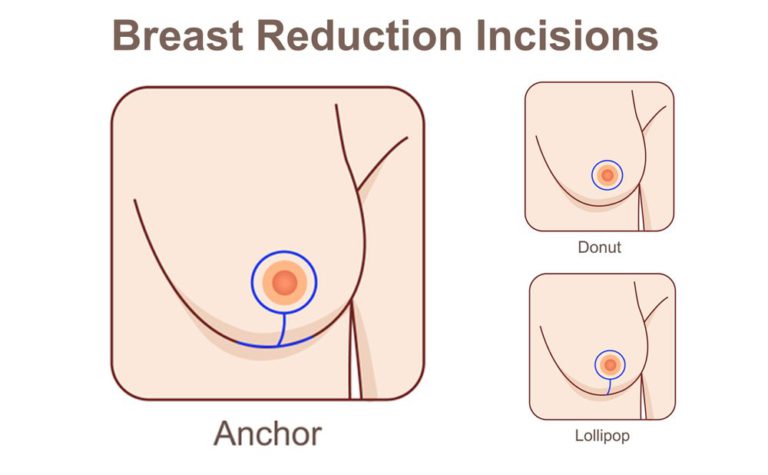
Anchor Incision Breast Reduction
Cosmetic procedures have facilitated many people, including women and men, to achieve their body contouring goals. Some people undergo liposuction and tummy tuck, while others
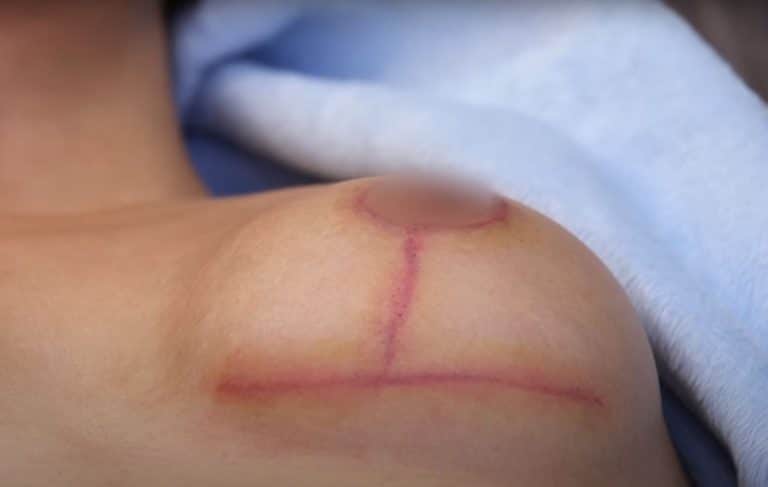
Breast Reduction Scars
Men and women are more conscious about their physical appearance because it affects their personalities and day-to-day endeavors. A slim, smart, and contoured body is

How to Relax Chest Muscles After Breast Augmentation
Breast Augmentation is an invasive procedure that requires the surgeon to cut through the skin, muscles, and tissues to insert the implants into the breast
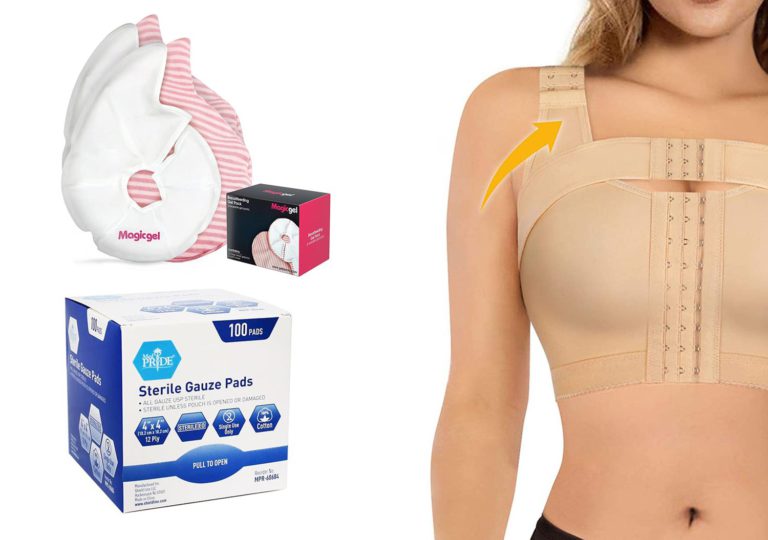
Breast Augmentation Recovery Essentials
Augmentation mammoplasty, also known as breast augmentation, is a result-driven surgery to increase your breast size, volume, and shape. The procedure requires a surgeon to
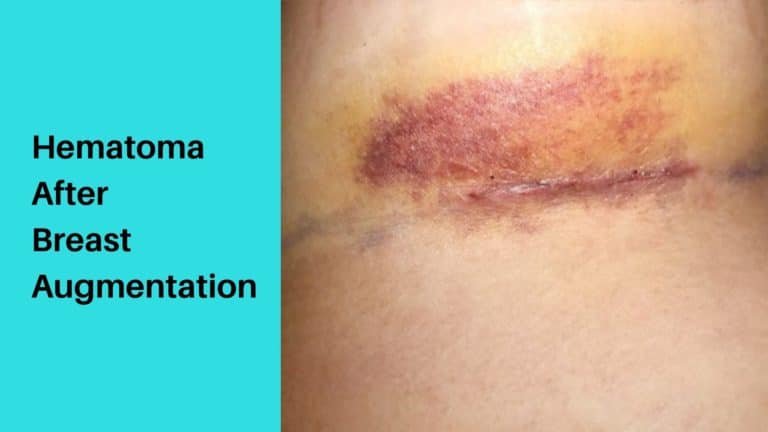
Hematoma After Breast Augmentation
Most women want to improve their breasts’ size and shape to enhance their femininity and boost their self-confidence. Breast Augmentation Miami is a highly sophisticated

Working Out After Breast Augmentation
Some women are unhappy with their breasts’ shape and appearance. Hormonal changes, pregnancy, and breastfeeding are the primary culprits that change the breasts’ shape and

How To Sleep After BBL and Breast Augmentation
Breast Augmentation is an evidence-based, result-driven, and highly reliable and safe procedure for women who want to improve their breasts’ shape, size, and volume. Breast

How long after Breast Augmentation can I Workout
Breast Augmentation is an advanced procedure that makes you feel more attractive, confident, sexier, and good-looking. Not only does breast augmentation improve your self-confidence, but
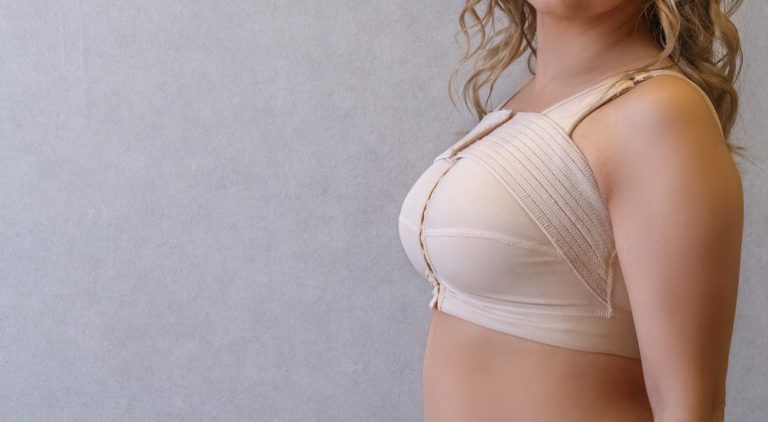
What To Wear After Breast Reduction Surgery
Breast reduction is a procedure that helps to provide a simultaneous reduction of breast skin tissue while lifting and creating a more natural, youthful, and

Breast Reduction Surgery Shopping List
As much as many women would like to have larger breasts, it is easy to forget that there are also some problems that come with

Mini Breast Augmentation
Many people mistakenly believe that breast implants are designed only to create a more heavy and voluptuous look. Although this is certainly a common goal
Meet Your Plastic Surgeon
Call Us, Write Us, or Knock on Our Door
Contact Us
Getting in touch with us is easy. Leave us your information and we will contact you as soon as possible. You can call us with any questions or inquiries 786-414-4746.
- Monday - Thursday: 9AM - 7PM
- Friday - Saturday: 9AM - 7PM
- Sunday: Closed
